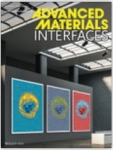The chemical composition of nanoparticles (NPs) may be so designed as to provide measurability for numerous imaging techniques in order to achieve synergistic advantages. Innovative and unique structure of the core/shell ZnO@Gd2O3 NPs possesses luminescent and magnetic properties, and is expected that they will become a new generation of contrast agents for Magnetic Resonance Imaging (MRI) and nanocarriers for theranostics. Thus, by surface biofunctionalization, it is possible to indicate particular nanoparticle compositions which provide efficient imaging, targeted drug delivery, and biocompatibility.
Novel ZnO@Gd2O3 NPs were synthesized and biofunctionalized by folic acid (FA) and doxorubicin (Doxo) to provide target and anticancer functions. Physicochemical analyses of the nanoparticles were performed. The biological study included a cytotoxicity in vitro, cellular distribution evaluation, as well as toxicity analyses, performed for the first time, on the in vivo zebrafish (Danio rerio) model.
Nanoparticles were found to be effective double-function biomarkers (MRI T2 contrast agents, fluorescent imaging). The biological study showed that ZnO@Gd2O3 and ZnO@Gd2O3@OA-polySi@FA NPs are biocompatible in a particular concentration ranges. Conjugation with folic acid and/or doxorubicin resulted in effective drug delivery targeting. The in vivo results described the toxicology profile toward the zebrafish embryo/larvae, including new data concerning the survival, hatching ratio, and developmental malformations.



